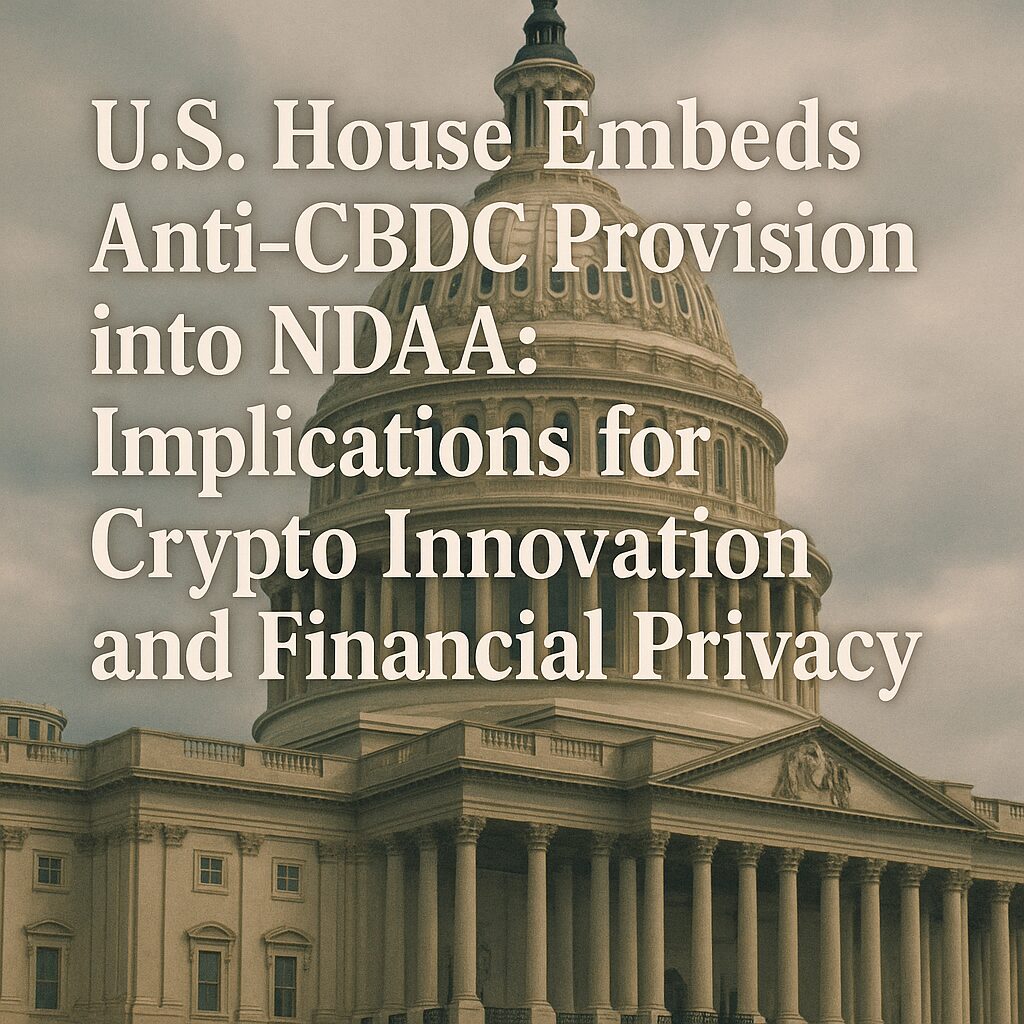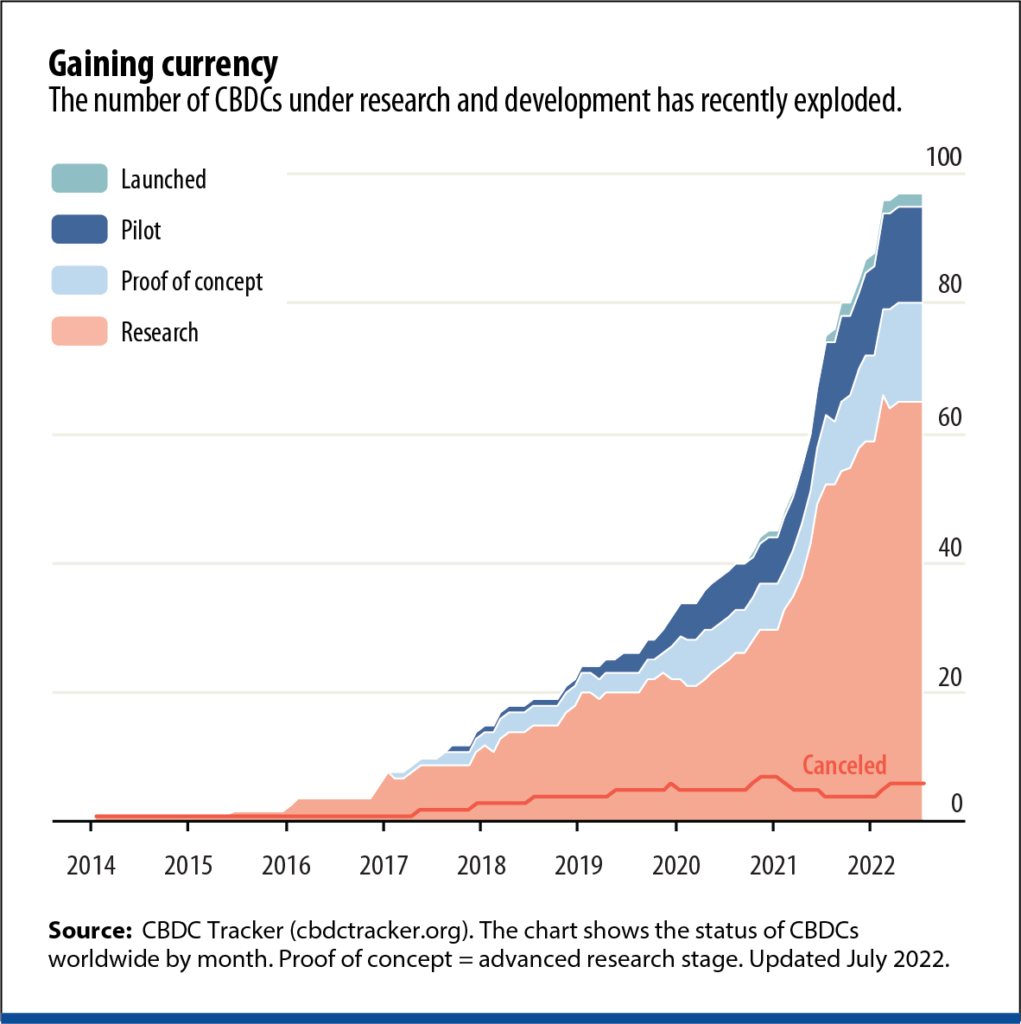
Main Points:
- The U.S. House added the “Anti‑CBDC Surveillance State Act” to the 2025 National Defense Authorization Act (NDAA), effectively barring the Federal Reserve from issuing any form of retail central bank digital currency (CBDC).
- The provision passed the standalone bill by a narrow margin (219–210) and gained stronger prospects by being part of the must-pass defense bill.
- Supporters cite risks of pervasive government surveillance and erosion of privacy; critics warn it could impede innovation and central bank research.
- This legislative move reflects broader Republican resistance to CBDC policies, aligning with prior executive actions and companion bills in Congress.
- For blockchain, crypto enthusiasts, and practical use‑case developers, the decision reshapes the regulatory landscape—closing some paths while opening private or decentralized alternatives.
1. Congressional Shift: Embedding Anti-CBDC into the NDAA
In July 2025, the U.S. House of Representatives amended the 2025 National Defense Authorization Act (NDAA) to include the so‑called “Anti‑CBDC Surveillance State Act.” This significant provision, previously introduced as a standalone measure by House Majority Whip Tom Emmer, effectively bans the Federal Reserve from issuing a retail central bank digital currency—either directly to individuals, indirectly through intermediaries, or using it for monetary policy purposes.
The standalone bill passed by a slim margin of 219 to 210. Embedding it within the NDAA—widely considered a must‑pass defense funding vehicle—greatly increases its chances of passage into law.
2. What the Law Prohibits: Technical Scope of the Ban
The amendment delivers comprehensive prohibitions across three fronts:
(a) Direct issuance – Federal Reserve banks cannot offer financial products, maintain accounts, or issue a CBDC directly to individuals.
(b) Indirect issuance – The Fed is also barred from issuing CBDC via intermediaries like private banks or institutions.
(c) Fed-led development – The Board of Governors and the Federal Open Market Committee are prohibited from testing, studying, developing, creating, or using a CBDC for monetary policy.
An important exception is included: the bill does not preclude dollar‑denominated digital currencies that are open, permissionless, private, and preserving the privacy protections akin to physical cash.
3. Motives and Justifications: Surveillance Fears vs. Innovation Loss
Proponents’ Viewpoint
Supporters argue that a CBDC could become a powerful surveillance tool, allowing the federal government to track and potentially censor individuals’ financial behavior. As Tom Emmer declared, embedding the ban ensures “unelected bureaucrats are NEVER allowed to trade Americans’ financial privacy for a CCP‑style surveillance tool”. He and other Republicans point to an executive order issued by President Trump and Senate companion bills like the “No CBDC Act” as part of a broader, America‑First approach to preserving financial freedom.
Critics’ Concerns
Opponents, including some Democrats, warn that the prohibition could hinder the Federal Reserve’s ability to research, pilot, and understand the risks and benefits of potential CBDC frameworks. They argue that such outright bans may stymie innovation and limit future policy flexibility.
4. Wider Legislative Context: CBDC Resistance and Politics
This move is not isolated. In January 2025, the White House issued a policy statement emphasizing protection from CBDC risks that threaten financial stability, privacy, and sovereignty, warning against their establishment or circulation in the U.S. Additionally, Senator Mike Lee reintroduced the No CBDC Act in the Senate, seeking to permanently enshrine a prohibition on Federal Reserve‑issued CBDCs.
The embedding of the Anti‑CBDC provision into the NDAA was reportedly part of a broader negotiation with conservative lawmakers, using the defense bill as a Trojan Horse for financial policy riders.
5. Implications for Crypto Innovators, Blockchain Practitioners, and New Revenue Seekers
5.1 Regulatory Landscape Changes
For developers and investors exploring CBDC-related opportunities—such as infrastructure, digital wallets, or interoperability platforms—the U.S. will no longer be fertile ground for government‑backed CBDC pilots. This could divert attention toward private, stablecoin, or decentralized alternatives in the short to medium term.
5.2 Privacy-Preserving Alternatives
The bill’s carve‑out for open, permissionless digital currencies suggests that privacy‑centric crypto solutions may thrive. Projects prioritizing anonymity, censorship resistance, and decentralization might gain momentum as a counterpoint to government‑monitored systems.
5.3 Geopolitical and International Fragmentation Risks
As other nations or multilateral institutions continue exploring CBDCs—for financial inclusion, efficiency, or monetary control—U.S. reluctance may yield divergence from global trends. This could pose challenges for interoperability and coordination in cross‑border digital liquidity and regulations.
6. Visual Aid Suggestion (Insert Here)

Caption: Global growth of CBDC projects over time (as of 2022), illustrating rising international adoption and public-sector experimentation .
Conclusion
The inclusion of the “Anti‑CBDC Surveillance State Act” within the 2025 NDAA represents a pivotal policy shift. On one hand, it delivers a bold assertion of privacy protection, locking out government‑controlled digital currency pathways. On the other hand, it may curtail public‑sector innovation and limit the Federal Reserve’s ability to adapt as digital money evolves.
For the crypto community, practitioners, and blockchain-based entrepreneurs, this opens a new era of opportunity in building privacy-focused, decentralized alternatives—while also signaling a need to engage proactively with regulatory and legislative developments. The U.S. may step back from CBDC, but the world keeps moving forward.

